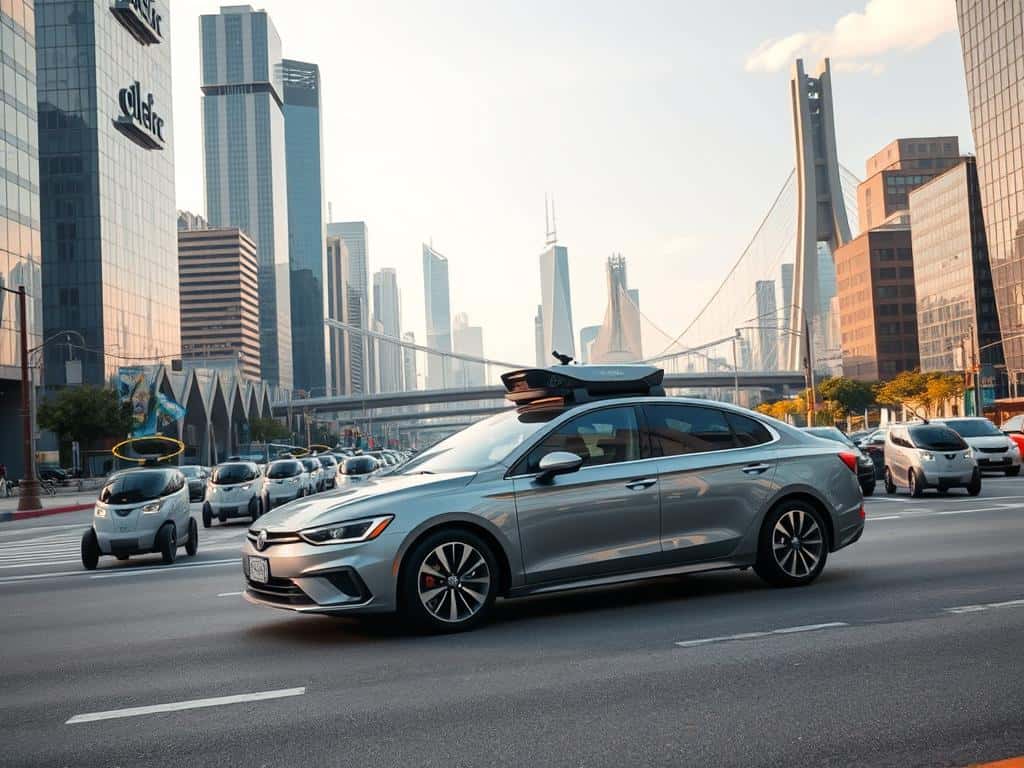Did you know only 25% of people fully trust self-driving cars? This shows how unsure many are about these vehicles. Companies like Tesla and Waymo have spent a lot trying to make them a reality. But, accidents like the 2018 Uber crash show there’s a long way to go.
The idea of safer and more convenient travel is exciting. But, is this a real step forward, or just a fleeting trend? The answer is not clear yet.
Key Takeaways
- Consumer interest in AD features varies, with many willing to pay premium prices.
- Waymo’s driverless taxis operate in limited geographical areas due to regulatory restrictions.
- Several accidents have contributed to public concern about the safety of autonomous vehicles.
- The development of global AD standards is essential for the widespread acceptance of self-driving technology.
- Legislation aimed at regulating autonomous vehicles is evolving both in the US and abroad.
Understanding the Current Landscape of Self-Driving Cars
The world of self-driving cars is changing fast. New tech and growing interest from people and investors are driving this change. Looking back, we see how far we’ve come from the early days of the 2000s.
Companies have invested a lot in these new technologies. This has led to both successes and challenges. These issues affect how people see these cars and the rules around them.
The Rise of Autonomous Vehicles
Autonomous vehicles are showing great promise in making industries better. They help companies save money and work more efficiently. This is true for both business and public transport.
These cars could make our cities less crowded. They offer a cheaper way to get around and connect us better. This could make our cities easier to get through.
Market Leaders and Their Technologies
Companies like Waymo and Tesla are leading the way. They use advanced AI to make their cars smart. Waymo is doing well in cities like San Francisco and Phoenix.
But, they face problems when they try to go to new places. They need detailed maps for each area. Tesla claims its cars can drive themselves, but it’s facing lawsuits and safety worries.
It’s important to watch how these leaders deal with rules and public doubts. This will help us understand the future of self-driving cars.

Challenges Facing Self-Driving Cars: Reality vs. Hype
The rise of self-driving cars has sparked a lot of excitement. But, when we look closer, we see many challenges that slow down their adoption. Issues like regulatory hurdles and public doubts are big obstacles. It’s important to understand these challenges for those interested in this new technology.
Technological and Regulatory Hurdles
Experts say fully autonomous cars might take 20 to 30 years to become common. One big problem is the need for better infrastructure. This includes clear lane markings and sensors along the roads.
Cities and states must fix these issues before self-driving cars can be safe and effective. Many people also don’t understand the difference between advanced driver-assistance systems (ADAS) and full autonomy. This confusion makes it harder for people to accept self-driving cars.
Incidents and Their Impact on Perception
Public opinion is a big challenge for self-driving cars. Even small incidents get a lot of media attention. This can make people doubt the safety of these cars.
For example, problems with Uber and Cruise have raised serious safety questions. These incidents have led to market pullbacks and changes in leadership. They show how important it is to educate the public about the safety of self-driving cars.
The Economic Impact of Self-Driving Cars
Despite the challenges, self-driving cars could have a big economic impact. Industries like trucking and delivery see a lot of benefits. For example, long-haul trucking on highways is simpler than urban ride-hailing services.
In cities and suburbs, smaller self-driving cars can use sidewalks and bike lanes. This makes delivery easier and reduces problems. But, safety and regulatory issues are holding back the adoption of these cars.
Conclusion
Looking at self-driving cars today, we see both hope and uncertainty. Technology has made it possible for autonomous taxis to run in cities like San Francisco and Los Angeles. This shows how they could make travel safer and more efficient. Yet, problems like unclear rules and doubts from the public slow things down.
It’s key for makers to fix safety issues and win back trust. A big worry is that 68% of Americans fear these cars. This fear is a big hurdle to overcome.
The future of self-driving cars depends on solving these issues. Companies like Waymo have made progress, but others, like Cruise, have faced setbacks. It’s important to find a balance between new ideas and keeping people safe.
Without clear talk from companies, the buzz around self-driving cars might fade. People might start to doubt their benefits more.
In the end, the journey to fully self-driving cars is tough, but the gains are worth it. They could cut down on accidents by up to 99% and make traffic flow better. As we keep learning and making rules, we must focus on what’s right and what people want. This is how we can make self-driving cars a game-changer.
